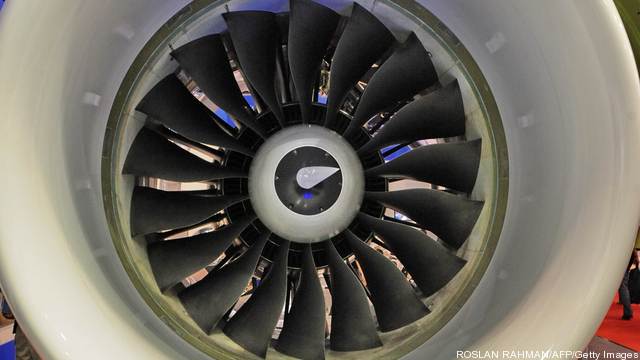Starbucks, Wal-Mart, Goldman Sachs and Johnson & Johnson are among the companies making the pledge to convert completely to renewable energy. [CNBC] Senate Democratic leaders on Tuesday introduced a measure intended to signal their support of President Obama’s climate change agenda. [The NY Times] An inventor at Boeing believes the roar from aircraft engines can be harnessed to produce… Keep reading →
Boeing
Energy News Roundup: Corporations Pledge To Renewable’s, Democrats Introduce Energy Bill & Airplane Engines Could Produce Electricity
By Conor O'SullivanSign up and get Breaking Energy news in your inbox.
We will never sell or share your information without your consent. See our privacy policy.As the US tight oil and gas boom continues, reliance on Canadian crude oil and gas softens. Robust US production also sparked a vibrant export discussion, which could eventually see Canadian and US companies competing for customers and market share. “The protracted controversy over the Keystone XL Pipeline project has focused a great deal of… Keep reading →
This week’s biggest deal happened in Washington, DC, where the House and Senate finally reached an agreement to reopen the US government and raise the debt ceiling. But there were also several energy-specific transactions and pending transactions that merited notice: Mexico’s state-controlled oil and gas company Pemex has voided a tender for the second phase… Keep reading →

History will be made when the first transcontinental airplane flight made with zero liquid fuel takes place this spring. The solar-powered plane called the Solar Impulse will travel from San Francisco to New York using 11,628 photovoltaic cells, several lithium polymer batteries and four 10 horsepower electric engines. The plane’s wingspan is the size of a Boeing 747, it weighs about as much as a car and has as much power as an average scooter.
The idea for Solar Impulse was born in 1999 when Bertrand Piccard and Brian Jones circumnavigated the globe in a balloon – a mission that almost failed due to fuel supply constraints. The incident motivated Piccard to circle the Earth again, but this time without fuel, a goal that hit a major milestone last year when Bertrand and Co-founder Andre Borschberg flew the plane from Switzerland to Morocco and back in the first fully-solar powered intercontinental flight. Keep reading →

One criticism of wind and solar power is their lack of reliability. Both depend on the weather for energy production and any change in weather affects their ability to produce electricity. In many regions, wind has the added liability of producing power when it is least needed. To solve this challenge, some suggest pairing standby generators with wind and solar farms so continuous power can be produced. Under this scheme, proponents argue that standby generators should be capable of varying its output to assure continuous energy production.
Varying output is called load following or turn down. The physical objective is to throttle back power generation to response to changing demands. The financial objective is to turn down without increasing fuel consumption on a unit basis. The environmental objective is to minimize air pollution, specifically carbon. Keep reading →

A billion dollars of investment later, US engine manufacturer Pratt & Whitney has begun flight testing its PurePower Geared Turbofan Engines. The new technology lowers fuel consumption, noise signature, greenhouse gas emissions and maintenance costs.
“The engine used a lot less fuel than we expected, we had to adjust the fuel load for the next flight,” Marc Kirner, Director of Flight Operations for Pratt & Whitney Canada told reporters at a recent media event in Hartford, Connecticut. Keep reading →

Much like microwaves and satellites, the US military could serve as an incubator for hydrogen fuel cell vehicle technology, helping it advance to a point where it can stand on its own in the global marketplace. In one of the latest examples of the private sector collaborating with the military on new technologies, General Motors and the U.S. Army, Pacific recently launched a 16 hydrogen fuel cell vehicle fleet in Hawaii.
The US Army views this as a worthwhile investment because its desire to reduce fossil fuel reliance, which can be a security concern. The contract is for a fleet of administrative vehicles that will be driven on base and around Oahu. Keep reading →
 A man works on the factory floor at Quadrant, a high end plastic processor on October 19, 2011 in Reading, Pennsylvania. Quadrant, a 70 year old company, employs more than 2000 people in 20 countries and is one of the few remaining manufacturers in the area to still provide stable jobs in an uncertain economy.
A man works on the factory floor at Quadrant, a high end plastic processor on October 19, 2011 in Reading, Pennsylvania. Quadrant, a 70 year old company, employs more than 2000 people in 20 countries and is one of the few remaining manufacturers in the area to still provide stable jobs in an uncertain economy.
Modern manufacturing is not your grandfather’s factory, and the same traditional education and immigration policies are forming barriers to keeping manufacturing in the US. Keep reading →
 Former White House Chief of Staff John Podesta moderates as Microsoft Chairman Bill Gates and US Energy Secretary Steven Chu deliver remarks on the state of energy, February 28, 2012 during the US Energy Department’s Advanced Research Projects Agency-Energy (ARPA-E) Energy Innovation Summit at the Gaylord National Hotel & Convention Center in National Harbor, Maryland, near Washington, DC.
Former White House Chief of Staff John Podesta moderates as Microsoft Chairman Bill Gates and US Energy Secretary Steven Chu deliver remarks on the state of energy, February 28, 2012 during the US Energy Department’s Advanced Research Projects Agency-Energy (ARPA-E) Energy Innovation Summit at the Gaylord National Hotel & Convention Center in National Harbor, Maryland, near Washington, DC.
We can dream it – so why can’t we make it? Keep reading →

The sagging US economy and its energy sector will soon be getting a boost, as well as some help in competing with China.
On September 30, the board of directors of the US Export-Import Bank approved $3.4 billion in financing to support US exports in a wide range of industries, including aerospace, oil and gas, locomotives and solar. The hope is that the financing will create over 20,000 news American jobs and help in efforts put the country’s economy back on its feet. For energy companies struggling to compete with a heavily subsidized Chinese energy market, the financing could be a major game changer. Keep reading →



